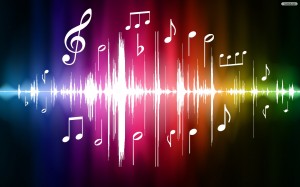By Dave Austin, “Music Professor”
This month brings us to Part 3, the concluding installment of this series on music programming.
In Part 1 I discussed selecting music to fit your audience.
In Part 2, I discussed building music sets.
Now, let’s talk about organizing your music or sets in a manner which fits the three basic segments of your typical event.
Breaking it Down
Consider dividing your event into three parts: (1) a beginning, (2) a middle, and (3) an end. Just as if you were writing a story, construct your paragraphs or sets.
As an example, let’s say that you’ve constructed a Motown set consisting of three or four tracks to be played back-to-back. However, after the second song, the dance floor is nearly empty; so you decide to bail out of the Motown and move to something else. BUT…if the dance floor had been packed, you may have decided to add another Motown track or two to the set.
As mobile DJs, our job is to pay close attention to the dance floor and determine if the dancers are into the music you’re playing.
The Beginning
This is sometimes referred to as the “pre-show.” During the early part of an event you’ll likely be playing background music at reduced volume while the guests are arriving, getting a drink, and socializing with one another.
Once this cocktail or social period is over, you’ll want to begin to ramp up your music and volume to encourage dancing. Caution: Even if you are asked by guests to play your “hottest” dance songs, don’t play all of them straight off. Doing so will cause you to reach your peak too soon, leaving you scrambling to find good songs later on in the event.
Remember, you are in control of the dance floor and it’s your job to manage the pace of the music. It’s a delicate balance. If you peak too soon, you could wind up with a near-empty dance floor before the event ends, but if you don’t play the music your dancing crowd likes, they could become bored and leave.
The Middle
During this portion of the event, the music level will reach full volume and you’ll play “key” songs that will pack the dance floor. Experience will help you learn your key songs, which can vary according to the type of event, the audience, and even your geographic region.
You’ll want to construct your sets and build to a peak. It’s at this point you begin to drop the biggest hits in your music arsenal. Tap in to the energy on the dance floor and push it upward, then after the peak has been reached and maintained for a time, begin to let it down gradually as the event moves toward its conclusion.
The End
You’ll need to be aware of the time and manage your music to meet the end of an event. Depending on the number of guests still in attendance and if they are still dancing, you may choose to end an event with a high-energy set, or create a mellow mood for slow dancing. Use your best instincts to make a choice and if it doesn’t produce dancers, change it up.
Some Final Thoughts
It takes a great deal of time and knowledge to become thoroughly familiarized with the top dance songs from the 1940’s to the present, covering multiple genres.
For newer DJs, you may want to “scout” out some more experienced DJs. A good way to do this is by joining a local and/or national DJ association.
Ask some veterans if you can go out on events with them and take notes as to what they are playing, the order they are playing the songs in, and when (the beginning, the middle, or the end), they are playing those tunes. Listen to their sets, note how the make on-the-fly changes to fit their crowd or situation, how they pace their music, etc. and how they handle themselves.
Observe just as if you were in a classroom, and regard each opportunity as an important learning experience.

